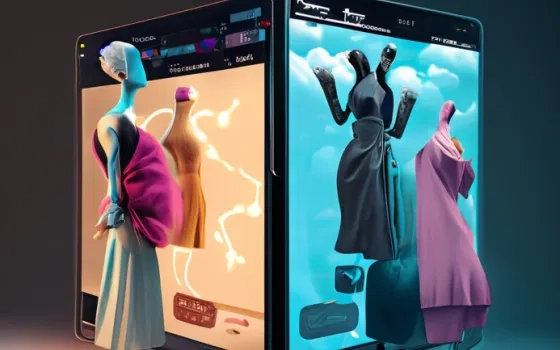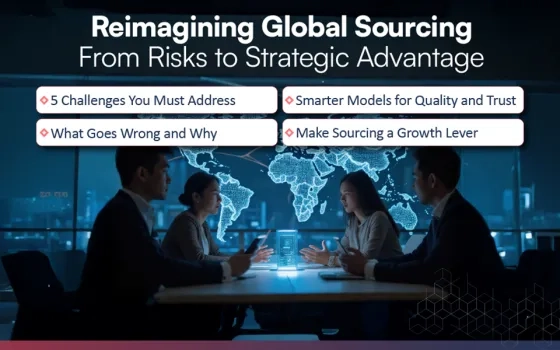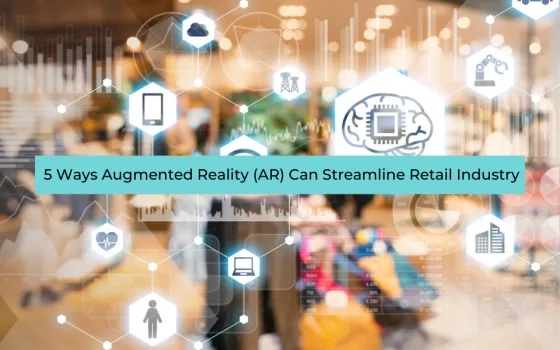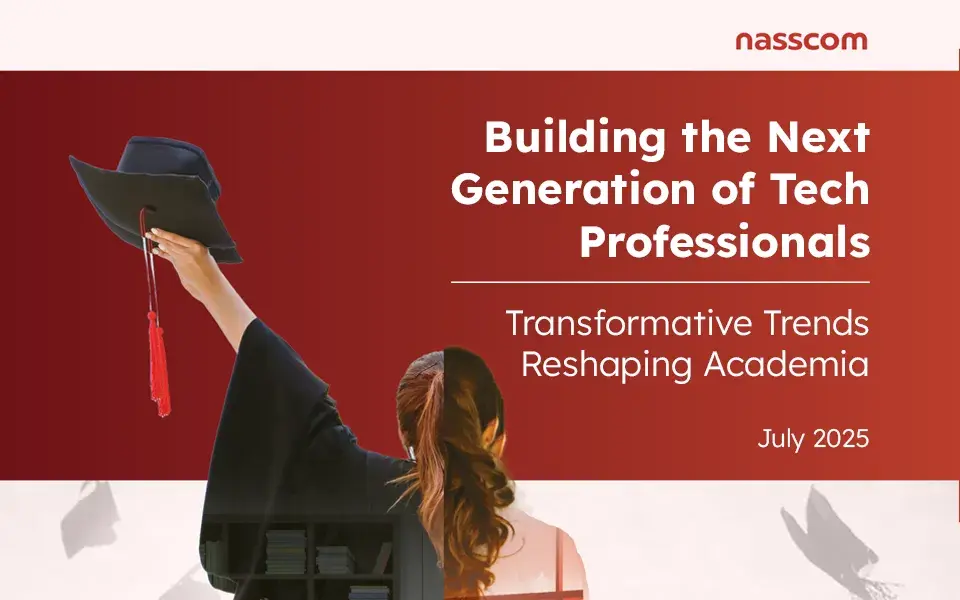Potential of genAI vogue
Generative AI though nascent, is rapidly evolving. Every other business entity is interested in exploring this emerging technology. During the pandemic, the hype for Metaverse and Web 3 evolved through multiple use-cases in different domains. Currently generative AI models are emerging post the fanfare launch of Chat GPT, Dall-E, Midjourney, copy.ai and other models’ adoption by diverse groups. These models’ utility and usability are often discussed by experts, as to: How are they helping humans? Are they creative or generative? Will Generative AI diminish human jobs? But what remains consistent, is the fact that this emerging AI technology, better known as the large language model, has enormous potential which needs to be harnessed by constant training.
Contrary to the belief, Generative AI models have been existing as part of Artificial Intelligence since the 1950s; generating sequential data as speech, time series and others, post the development of Gaussian Mixture Models or Hidden Markov Models. With the advent of advancement in Natural Language Processing (NLP) and deep learning models, generative AI rose in prominence and showcased significant performance improvements. These models are based on probability theory. Initially, language models were incapable to adapt to long sentences, which was addressed by Recurring Neural Networks for language modelling tasks. Gradually Transformer Model, a neural network requiring less training time compared to earlier recurrent neural architectures was applied in computer vision, audio, and multi-modal processing. This led to the development of generative pre trained transformers (GPTs) which is a backbone for innumerable generative models across multiple domains.
Generative AI is an incremental change in the artificial intelligence progression. With businesses accelerating towards leveraging this technology, it becomes immensely important to understand generative AI’s potential in delivering economic and societal value for shaping critical decisions at large. According to Bloomberg, generative AI market is estimated to grow from a market size of $40 billion in 2022 to $1.3 trillion over the next 10 years owing to the influx of consumer generative AI programs like OpenAI's ChatGPT and Google's Bard. Based on McKinsey’s research across industries, analysis of 63 use cases highlights that generative AI has the potential to generate $2.6 - $4.4 trillion in value across industries in the coming years depending on a variety of factors, including importance and mix of divergent functions and scale of an industry’s revenue.
With the rapid development of generative AI to augment the impact generated by AI till now. Experts in this field say that generative AI is triggering an inflection point in AI, capable of generating additional value in trillions of dollars each year thus transforming the nature of work. Few technology experts highlight that AI is still evolving with much needed human intervention. The self-learning models currently lack thought, empathy or creativity which is unique to humans. Currently, AI models operate on inference based or deducted logic rather than memory based or cognitive logic. However, generative AI possesses potential to open new frontiers in innovation and creativity as they continue to mature and develop.
Generative AI is already extending the scope of what AI can achieve and what it can offer to businesses and society as a whole. According to Harvard Business Review, Generative AI’s biggest opportunity lies in the ability to overcome innovation democratization challenges and augment human creativity. Tools can be developed and leveraged to assist front end of innovation increasing ideas specificity by evaluating or sometimes combining ideas. But this combination and generation of creative content comes with its own set of risks including IP infringement or copyright issues. Generative AI in a decade is likely to be able to help humans evaluate creativity and create unimaginable solutions which are novel, feasible, specific, impactful and workable.
GenAI in the retail value chain: as-is state
Across industries, the implementation needs of generative AI are different depending on different value chain elements. In the retail industry the likely impact, as reported by Mckinsey, is in the range of $400 - $660 billion per year. Based on industry analysis, generative AI can increase productivity by approximately 2 percent of annual revenue. Digital transformation in retail is replete with a plethora of success stories, based on the implementation of AI, computer vision and advanced analytics on large sets of data. Businesses have leveraged data across vast numbers of SKUs, sprawling supply chain networks, and complex product categories to bring the fruition of AI to the consumers.
The consumer facing elements offer generative AI opportunities to augment existing AI use cases. Depending on the current deployment status of generative AI in retail, many short-term use cases are being explored in the value chain elements. The short-term use cases are emerging majorly in creative content creation or personalized marketing areas. For instance, in retail generative AI will be able to personalize offerings which are currently supported by existing AI models and optimize targeted marketing activities by reducing required time for creative and innovative content generation. McKinsey research estimates that boosting marketing and customer interaction performance is directly proportional to generative AI’s additional value generation, which is approximately $310 billion.
The generative AI tools may also be leveraged to strengthen AI-driven dynamic pricing tools, as generative AI tools are adept in data management. Such activities are paving the path for the usage of generative AI, as a helping agent in the long-term when applications across the enterprise will be harnessing the benefit of an integrated view. The key functions will be automated across marketing, sales, inventory, supply chain and customer service to streamline the process using generative AI. While from the long-term perspective, there are multitude of areas or functions where generative AI will augment the usage of AI overall. The retail value chain elements have scope of augmentation and creative innovation for customers as well as employees based on the analysis highlighted below in Figure 1. For example, hyper-personalized product discovery and creation with multimodal inputs and an integrated 360-degree view will help in increasing sales by achieving higher omnichannel conversion rates. Heyday by Hootsuite is a perfect example of a conversational AI platform which assists retailers in capturing leads and increases buyer engagement.
Figure 1: Value Chain elements generative AI use cases
Generating the unique world of fashion and beauty
GAI generating a creative and inclusive fashion
Fashion as an industry is rife with instances of creative innovation. The technological advancements leveraging artificial intelligence (AI) and machine learning combined with Web3, blockchain and other technologies are enhancing efficiency and creativity in the world of fashion. With businesses adopting generative AI, early adopters and experts are exploring DALLE2, Stable Diffusion and Midjourney to generate novel designs of apparels, shoes, accessories etc. According to McKinsey and Business of Fashion (BoF) analysis, generative AI will add operating profits in the range of $150 billion to $275 billion in the span of three to five years.
Fashion industry is witnessing GAI (generative AI) use cases starting from codesigning, agile content development for marketing in form of videos, lyrics, 3-D design, virtual models(influencers) for campaigns and many more. Currently, the major use cases in fashion value chain are emerging in these areas – product design & innovation, marketing, sales and customer experience & service. In the realm of evolving fashion, generative AI has emerged as an assistant to the designers. With GAI’s ability to generate new images they are helping fashion designers in creative designing – by creating novel designs based on specific parameters such as fabrics, desired aesthetics or intended market and by applying one design pattern to another generating variations in designs reducing production time and wastage of resources. Zara is leveraging GAI for unique fabric patterns and textures revolution replicating the traditional craftmanship’s aesthetic appeal
Many instances have emerged in the fashion industry where GAI implementation is helping in enhanced customer engagement through personalization. Stitch Fix is employing GAI to enhance customer experience in e-commerce platform. Nike and Adidas are using generative AI platforms for personalized customer engagement allowing customers to design their own shoes by choosing from an array of shades, materials and patterns. Innovative Eyewear, a smart eyewear producer introduced fifteen styles enabled with ChatGPT under the Lucyd label; enabling music listening, calls answering and query addressable via microphones and stereo speakers connected to ChatGPT.
The examples of deployment in 2023 are not restricted to creativity but has an element of inclusivity too. Levi’s partnered with Lalaland.ai (digital fashion studio) to diversify Levi’s online customer experience by testing custom AI generated model. These models help customers in understanding how a product will look on them by generating variations of models replicating their body size and shape, skin color tone, hairstyle etc. Myntra in India has incorporated “MyFashionGPT” to find new looks or styles. FlixStock provides full product visualization where customized output based on customer’s requirement is generated. The GAI model in FlixStock is trained on large data sets which are not confined or biased to specific body types or ethnicities. In recent AI fashion week, a collection named “Soft Apocalypse” was presented where the apparels were designed using Midjourney highlighting the inclusivity of body type, size and ethnicity.
GAI applying an innovative beauty regime
The beauty industry is witnessing innovation in varied technologies, specifically artificial intelligence. The adoption of AI-powered innovation is prevalent in multiple industries and beauty industry is not an exception. While brands in beauty have leveraged AI for more than a decade now, currently the major difference lies in the lower entry barriers. With generative AI tools like Dall-E2, ChatGPT and Stable Diffusion as assistants, beauty industry is now a front runner in terms of beauty tech innovations, which are shaping up new customer experience in myriad areas, starting from creative content generation to personalization and others.
The implementation of use-cases in beauty highlights that the developed tools are acting as an advisor. For example, “Skin+Me” prescribes personalized products leveraging images of customer’s skin. With GAI this is scaled further technologically, where new images can be generated predicting the change in skin over a span of time post usage of the cosmetic products. With this as a hypothesis, AI start up Haut.AI developed a novel skin simulation platform known as SkinGPT. Similar to virtual skin analysis or skin consultation application, customers upload their photo in SkinGPT. The tool then generates simulations of customers’ skin showcasing products’ effect based on the brands’ clinical data, environmental factors like pollution or UV rays and a personalized quiz.
On similar lines of AI at core beauty simulation, another beauty brand Galderma in partnership with Crisalix, launched an interactive consultation process named FACE, which will show customers potential outcomes of cosmetic injectables. Elizabeth Arden is leveraging Dall-E for storytelling in marketing and customer engagement through their recently launched virtual store with immersive museum where Dall-E features brand’s archived images with a story on how during World War 2 “Victory Lipstick” was created. Prose a haircare brand diversified its product portfolio by launching AI powered skincare line, which generates customized product formulations based on the unique characteristics and needs of the customer post virtual consultation.
Assisting an ethical and boisterous future
Generative AI is creating ripples in the manufacturing process of fashion and beauty beginning with design, pattern or formulation creation, production to quality control and sustainability. GAI can be leveraged to attain the ESG goals; if included in processes it has potential to reduce waste, optimize production and encourage conscious consumption. By deploying generative AI as an innovation and sustainability tool, firms can unlock new opportunities for creativity. According to Harvard Business Review, by mixing different innovations via generative AI, a novel idea or innovation can be generated.
Fashion & beauty industry is leveraging this approach to design and reduce go to market time for products with cost efficiency. This process allows firms to evaluate a wide array of product concepts rapidly and pass the cost benefits to the customer in terms of reduced pricing. The benefits are not limited to price, leveraging generative AI helped in eliminating resource wastage from sampling and prototyping standpoint, which is sustainable. Renowned luxury brands post pandemic emphasizes on embracing virtual or innovative alternatives to showcase their collection for instance immersive fashion shows in metaverse, AI Influencers or virtually generated models.
In future the idea generation to production process can become a community-based platform (Figure 2), where trends and design ideas will come from consumers, creating targeted collections aligned to customer needs and demands, increasing brand stickiness and in the process contributing towards reduction of environmental impact.
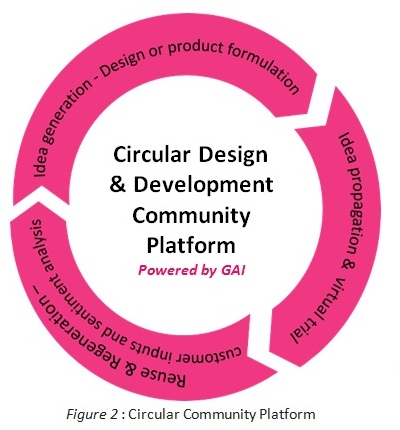
The usage of generative AI for hyper-personalized solutioning in beauty and fashion industry considering inputs from customers will enhance customer buying journey thus impacting increase in brand loyalty and net promoter score. For example, GAI enabled assisting tool can analyze customer’s feedback and sentiments from text-based reviews, emails, product ratings, online posts and social media platforms. If the customer’s comment frequency highlights positive sentiment toward a
product or a simulation of to be launched product, then GAI assistant will generate images of related products for recommendation.
However, one of the major challenges of generating ideas and creative designs like this raises a pertinent question, that is the innovative design creative or is it violating intellectual property rights. Existing legal framework is not capable of addressing these issues. The data from which the new innovative content is being generated was accredited to some one or the design generated is feasible to produce or not; these validations and verifications are not yet known. Also, the unique and innovative content generated via GAI assisted tools can be copyrighted or not is not clear, thus presenting a dilemma for brands as infringement will erode the brands reputation for an extended period.
Big firms with proprietary data are skeptical of using generative AI for product innovation or R&D due to data privacy concerns. They believe that there is uncertainty around the usage of external data and confidence in the data is still a problem. Unilever which owns beauty brands like Hourglass, Tatcha, Ren and the others, is proceeding with extra caution. As during R&D across its beauty brands, they use proprietary data with a precaution of it not getting leaked elsewhere. It also needs to exercise caution regarding trusting the data being used, for developing effective products for its customers dermatological concerns. Therefore, with a smaller proprietary data pool Unilever is training its internal R&D generative AI model, with no access to open data AI systems. However, Unilever brands, like Dermalogica, are using ChatGPT for marketing processes.
Thus, fashion and beauty brands need to traverse a long journey with proper training data before generative AI can be democratized for creativity and innovation. As the ethical concerns and data privacy issues need to be addressed first, to make the usage of generative AI assisted tools robust, resilient and trustworthy. The human skills and values can be instilled in technology is still a debate, but if generative AI tools are trained ethically to become responsible AI, then they will not be impacting jobs rather they will be able to advise and assist humans. For businesses, responsible GAI will become a boon as they will become virtual cobots in future enhancing efficiency and productivity, working on an integrated data from divergent functions in the value chain.



